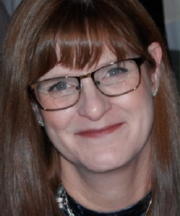 I remember the day I met her. I was visiting the local Farmerâs Market, and she was a vendor selling her jewelry. One look at the beads in her wares and one look at her made it clear, âyouâre not from here,â I said, part statement, part question. These stones came from Americaâs West--high quality, of substantial size, with polished turquoise, carnelian, and a variety of breathtaking amethysts. âIâm from Minnesota,â she replied.
I remember the day I met her. I was visiting the local Farmerâs Market, and she was a vendor selling her jewelry. One look at the beads in her wares and one look at her made it clear, âyouâre not from here,â I said, part statement, part question. These stones came from Americaâs West--high quality, of substantial size, with polished turquoise, carnelian, and a variety of breathtaking amethysts. âIâm from Minnesota,â she replied.
Transplants. Thatâs what I call us. There are local natives, and then thereâs us. I wouldnât exactly call us an invasive species, but weâve come from a different âecosystem,â and have arrived to try and grow roots in this environment. We will never be âfromâ here, any more than a hybrid lily, or Italian herb is âfromâ these West Virginia hills. A lovely burgundy Chinese Maple cannot become a Paw Paw tree. Even the Golden Delicious apple, the West Virginia state apple and second most popular apple in the country, has differences depending on the origin. Those grown in the West are larger, smoother, and more uniformly colored than the tastier, freckled Golden Delicious grown in West Virginia.
I remember when I first appeared on the local scene, now some 29 years ago. A local bartender unabashedly hit me with 20 questions. Who are you? Where are you from? What are you doing here? Who are you related to? At the time, it felt like an interrogation, but over the years, I have found the same tendencies in myself when I meet a new transplant. I canât resist asking at least one main question, which I did at the Farmerâs Market eleven years ago with the jewelry vendor. âHow on earth did you end up here from Minnesota?â
California, New York, New Jersey, Florida, Virginia, Ohio, Michigan, even South Africa, Britain, Texas, Washington D.C. Some take root, some donât. Some flourish, some donât. As I said â I wouldnât call us an invasive species.
I remember how country-ignorant I was when I moved here. I remember the culture shock, the allergies, driving the 4-door luxury sedan I inherited from my grandmother across roads it was never meant to drive on. Three weeks after I moved into my apartment in the Normantown area, someone wrecked into the bridge where my gravel road met the pavement, and the bridge was closed for repairs. I had to ride my mountain bike (previously only used to ride the paved walking trail in Parkersburg City Park at night) two miles to get to my car before commuting to campus for nearly a month. I remember encountering my first truly dark night when the time changed in the fall and there were no streetlights for miles. Many a time I sat in my car on the wrong side of the bridge, pumping up the courage to pedal those two dark miles. Though Iâd had the bicycle for years, it was the first time I ever had to master understanding and changing the bikeâs gears.
Over the past nearly 30 years, Iâve not only been able to spy the transplants, but I can closely predict if theyâll take root or not. Thereâs more clay in the soil here, more shale. Not all plants can grow here, and even fewer can flourish. There are amazing native plants that grow in these lands and nowhere else in the world, like those along the shale sides of Kateâs Mountain in Greenbrier County, and in moist and shaded valley pockets. But transplants need to be hearty, and often have challenges growing deep roots. Some transplants are annuals, others are perennials.
Ten, eleven (or so) years after I met her, Mrs. Minnesota was gone, back to her home state. Her house was for sale, vacated, needing to be prepped, packed, and cleared for the next owner. The loss caught me off guard but was no surprise. She bloomed here, shared her beauty and aroma with us, but her rootsâdeep roots, never really grew here beyond campus. Jewelry was her hobby, teaching was her profession, and her deep roots were in the West.
As I age, I think about the transplants who have returned to their native environments or elsewhere. The basket weaver, the stained-glass artist, the potter, fashion designer, at least three who spoke several languages. Many were annuals, here and gone before barely germinating. The perennials though, I hate to see them pack up and return to their natural environment, to rest or retire or flourish again after years of tilling and working the ground here. We already have native plants young and old vacating these hillsides for flat and/or fertile lands elsewhere. You canât really blame perennial transplants for returning to their natural resources and deeper roots.
I never was close to the jeweler/professor, but I liked her. We had similar interests, mutual respect, and crossed paths with some consistency. I sent her an email of good wishes, offering assistance for the transition if needed. And yes, she needed help packing up the house, and a significant portion could be donated to the annual library yard sale if I was willing. After all her time here, she had very few trusted friends to call upon for help.
Itâs a strange thing, packing someoneâs house in their absence. I had never been to her home, assembled and proper, and here I was amongst her belongings, half-packed and half on full display. The living room ceiling was covered in a collage of sheet music, the top-end paring knives had polka dots in shades of pink. Character. Color. Creativity. Packed, purged, parceled, and dispersed.
The same happened with the couple from Pennsylvania, who offered me strawberry herbal tea and homemade peanut butter cookies as we went over my taxes. Consistently there, and then gone. By the time I learned I had been living near the stained-glass artist for many years, her husband died, and she was goneâback to another micro-climate of West Virginia. There was a time when I resented these âabandonments,â these quiet uprootings that leave gaps in the garden. But I have learned to simply wish them well and hope to see them again perhaps. Some of them I track with social media, some I donât.
The census numbers from the 2020 census are beginning to roll out. We have already learned that West Virginia has lost a congressional seat. I recently read that Calhoun County lost an estimated 600 residents in the last ten years, and the state has seen a loss of nearly 60,000. I wonder how many have been perennial transplants who have gone for better medical care or access, returned to their families, or simply sought out sunnier skies.
Inevitably, more transplants arrive. I enjoy collecting their stories of where-from-and-how-they-ended-up-here. Some, I have tried to support and encourage, others have been sent on their way, like the coach from Kentucky prone to public conniption fits when he didnât get his way. He only got louder when I smiled at him and noted, âyou arenât going to last here very long.â Within four months, in a flash of front-page drama, he too was gone but not forgotten.
Most of my family are urban or suburbanites. For them, central West Virginia is a nice place to visit, âbutâ¦â I donât know if itâs related to their age, or my age, or our cultural differences, our different values. Statistics show a loss in our young population, gone off to find jobs elsewhere, but I think too there is a transplant mid-life crisis. Thereâs a moment of existential crisis when after ten to twenty years working the ground, you realize that work never ends if you want to keep your pasture or control the multiflora roses and bindweed. No matter how much roadwork is done, or yellow curve signs are set, the roads still twist and turn and crumble. Your work has not made the impact on the land as you have hoped.
I might see the jeweler/professor again. Might see the basket maker in Ohio, the poet in North Carolina, the artist in Arizona. Perhaps. I have mementos of each of them in my houseâwooden spoons, bent-eared books, earrings, silk shirts, sturdy honeysuckle baskets, polka dot paring knives. I miss their colorful presence in our community garden, the gathered honey has less flavor. Of course, their presence here cross-pollinated with the native environment, and their influence and then loss of it, is a loss Iâm starting to recognize. You cannot help but wish them well.
You can subscribe to Lisaâs seasonal newsletter at tinyurl.com/two-2020 or visit her at Lhayesminney.net |



